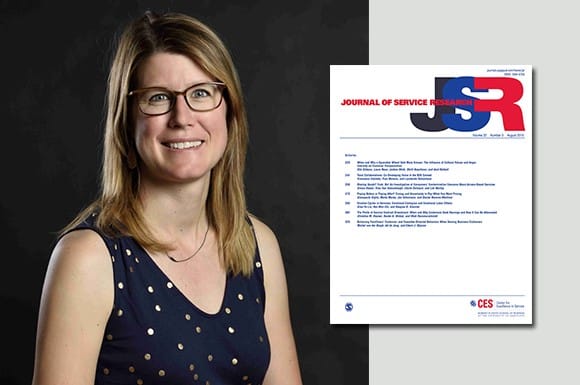Research on telepresence: How to strengthen the perception of projection?
Published on 06/4/2019
Thematics :


Research on telepresence: How to strengthen the perception of projection?
Published on 06/4/2019
Nathalie SPIELMANN, Associate Professor of Marketing at NEOMA BS, has co-authored the research paper Design Antecedents of Telepresence in Virtual Service Environments, published in December on the Journal of Service Research website, a CNRS rank 2 review.
“My interest in the subject of virtual reality arose from the agreement signed with the city of Reims,” explains Nathalie SPIELMANN, Associate Professor of Marketing. “I wondered why tourists rarely thought of coming to visit Reims, despite its close proximity to Paris. We know how essential the feeling of projection is in decision-making. However, many people still seem to be unaware of the wonders of the city. With this in mind, we have tried to envisage how certain officials could encourage telepresence* in relation to promoting the city's appeal via their communication strategy. For this research in particular, we examined the viability of virtual tours and 360-degree photos. We used the environmental psychology model and information variables endorsed by Kaplan and Kaplan: mystery, complexity, clarity and coherence. The objective was to see which of the variables used in a 360-degree photo would enhance telepresence. On the basis of three complementary studies, we attempted to identify the prevalence of certain information variables and their impact on a potential consumers' intention to buy or to visit.”
Study 1, focuses on content analysis, using expert judges and a global consortium of virtual services to provide initial evidence that informational variables do influence the perception of telepresence.
Study 2 is based on a commercial study. It shows the strong link between indicators of mystery and complexity (sensory variables that are more meaningful) and telepresence on consumer intentions and whether potential consumers are likely to be interested in a product or place.
Finally, Study 3 uses a consumer sample to reproduce this perception of telepresence and demonstrate that for those who favour visual information processing, the effects of mystery and complexity are stronger.
“The results show that the effects are strong when there is an alternative processing path through aesthetics, regardless of consumer knowledge and identification with the product or its environment. This study shows that the aspects of mystery and complexity reinforce the perception of telepresence. This presents an interesting possibility for the development of scenarios related to the tourism industry or even for companies who would like to highlight their sales outlets, for example,” explains Nathalie SPIELMANN.
Orth, Ulrich R.; Lockshin, Larry; Spielmann, Nathalie; Holm, Mirjam (2018): Design Antecedents of Telepresence in Virtual Service Environments. Journal of Service Research, SAGE Journals. Collection.
* Telepresence refers to a psychological state in which a person is given the impression that they are mentally although not physically present in a place other than their current location.
